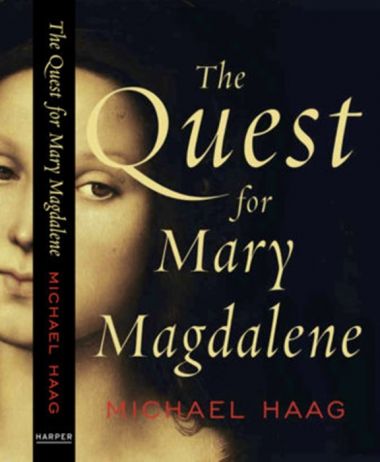
(Harper Collins Publishers)
She’s been called many names: apostle to the apostles, a sinner turned saint, feminist icon, Jesus’ disciple and Jesus’ wife.
She is Mary Magdalene, a biblical figure that has been “interpreted and misinterpreted, just as Jesus has been interpreted and misinterpreted,” according to Michael Haag, historian and author of “The Quest for Mary Magdalene,” published in May.
Speaking to Religion News Service, Haag says what surprised him the most during his research on Mary Magdalene was “how important the story has been in the course of 2,000 years, its inventions and reinventions, and how much it still matters to us today.”
He says to him this suggests that “Mary Magdalene has a significance, a power, greater than the Gospels tell, greater than the Church.”
Explaining what his book is all about, Haag says, “It does not pretend to offer certain answers; instead, it asks questions about everything we are told about MM. How much is true? What are the motives for inventing things? Why turn MM into a whore when the gospels very clearly say nothing of that at all? How do these pieces fit together? What stories do they tell us? What new questions do they raise?”
Pope Francis recently elevated the observance of Mary Magdalene’s memorial into a feast day in the Roman Catholic Church, which was celebrated for the first time on Friday, July 22.
Commenting on this, Haag says this is another indication that the Roman Catholic Church is reverting to how things had originally been. In 1969, the Vatican also decided to change the reading for the memorial of Mary Magdalene, which used to be about a “sinner” anointing Jesus’ feet.
In truth, “the Orthodox Church never said Mary Magdalene was a prostitute or a sinner. That was an invention of the Church in the West,” Haag says.
On the claim that Mary Magdalene was Jesus’ wife, Haag says “the very fact that MM was an independent woman and worked closely with Jesus raises questions about their relationship.”
“It would have been extremely difficult for an unattached Jewish woman of first-century Palestine to have traveled with Jesus and to have had the wherewithal to support him financially. And it would be scandalous for a woman who was not closely related to Jesus, or not his wife, to have gone to his tomb to clean and anoint his naked body. In other words, there are grounds for this theory and people have been proposing something like it since the earliest centuries,” he says.


